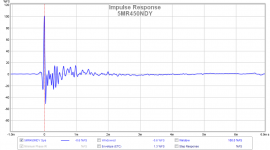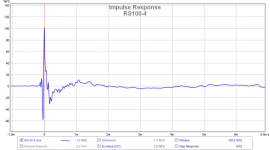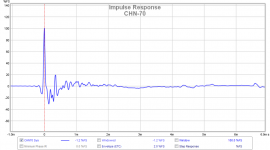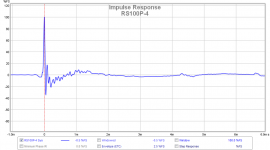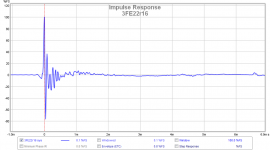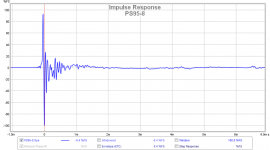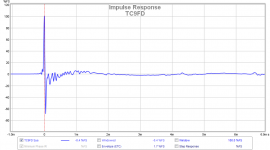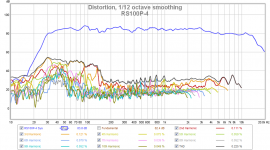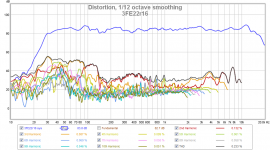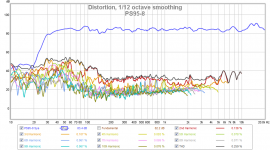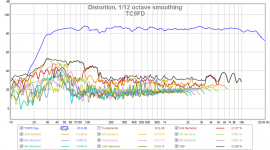Ok.
I guess I like flat response since I voted for B. But I was missing resolution in the top octave. Some of the other drivers did provide more treble but was very peaky and unnatural to my ears. I guess I'm more of an "wide range with tweeter" kind of guy then...
The F-driver was the worst thing I ever listen to.
This test has been very helpful and I would like to give xrk971 for the effort.
for the effort.
I guess I like flat response since I voted for B. But I was missing resolution in the top octave. Some of the other drivers did provide more treble but was very peaky and unnatural to my ears. I guess I'm more of an "wide range with tweeter" kind of guy then...
The F-driver was the worst thing I ever listen to.
This test has been very helpful and I would like to give xrk971
 for the effort.
for the effort.I'm still wondering why I liked the RS100-4 a little better than the RS100P-4. It might be my age and + 14 kHz sounds 😀.
I'd like to hear the RS100P-4 equalized to flat. It seems to have the lowest response variations of them all. Of course a look at the off axis response is mandatory. Some drivers change a lot with listening angle.
wesayso
thanks yes that does clear it up (i should have paid more attention to the color legend my mistake was thinking the curves where presented in descending order A(top) B(2nd) etc..."doh")
thanks yes that does clear it up (i should have paid more attention to the color legend my mistake was thinking the curves where presented in descending order A(top) B(2nd) etc..."doh")
Think this is good data trying to learn, IR for 3FE22r16 verse TC9FD in a previous test at xrk971 just after he received the Faital Pro driver, his dagger testbox and condition showed too. The HF spike makes it ring a lot compared TC9, my experience is that because this is a paper driver it's not as annoying sound wise as if had been a metal driver with same ringing, but I'm think large and open in this statement so please pop in if other experience is available.
All credit goes to xrk971 for the material attached, and hope in this data we all can learn and educate each other.
This is imo the amplifier not the driver.
This is imo the amplifier not the driver.
Okay do you mean because of digital power amp in test setup, when i get a pair myself will investigate because here it will see on paper 53miliOhm Sansui amp having +/- 64 voltage rails.
Does the order of presentation change the order of preference?
Does the selection of music change the order of preference?
Does the number of options given change the order of preference?
Does forcing someone to pick a "favorite" versus a weighted ranked list affect the data?
Yes, yes, yes and yes. Have this been significant factors in this poll?
Anyway, the result of this poll is in line with research that has been done in the last few decades. Let's do more tests and collect more and new data. This is how progress is made.
Last edited:
Order of choices may contribute something but the fact that both "flat response" drivers were chosen with about same margin shows that the ordering was less of a factor relative to how people thought they liked the sound.
Last edited:
Yes, xrk might have ampboard without filter, then he could compare too. Simulation of the amp shows very poor impuls and steprespons with load like the Faital. Could also be something some people reacted to saying this was worst driver in test, maybe they somehow heard something strange, I didn't btw, and I did try to hear funny things🙂
Yes, yes, yes and yes. But the results of this poll is in line with research that has been done in the last few decades. Let's do more tests and collect more and new data. This is how progress is made.
And not make overly broad/general statements from THIS test alone. 🙂
I guess the moral I'm *trying* state is that you can lump the high performers together and say something about them en-masse, but, given the constraints I laid out above, it's a stretch to say this driver is clearly the best.
E.g. the flatter response setups did better in this test.
Progress is made when something definitive can be said. Trust me (or better yet, don't!), the field of my regular work makes me question anything published. 🙂
My exact thoughts on this. Maybe the slight on axis rise for D in the top octave flattens power response a bit? It's still pretty flat throughout most of the range.
In the context of this test I am not sure if that is worth discussing. I can't remember if the mic distance was mentioned, but here it seems like it could be pretty closely mic'd? That way we'd lose a fair amount of the room sound and the power response is what determines how any reflected sound may be presented. Certainly here the axial response is going to be the most, by several orders of magnitude, important in our perception of the recorded sound.
Personally I think E, the Dayton RS100P has the flattest frequency response. Yes it has a downward trend from 1kHz and up, but ignoring that the +- deviation, if one were to draw a best fit line through the flat response, would be very low indeed. Incidentally people tend to prefer a downward tilted response as these tend to be the most pleasing in the long term. This is how my system is balanced so it's no surprising that I preferred E because it's what I am used to and know it's what I can listen to for hours on end without listening fatigue.
Driver G was my second favourite and I had a hard time choosing between it and driver E. I felt that G sounded pretty much identical to E (go figure) except that it has a bit more top end sparkle. I almost went for G but felt that it could perhaps become fatiguing in the long term so opted for E.
The other drivers were all slightly too edgy for my liking, something a bit of simple EQ could no doubt fix, or plain horrible, like driver F, the MA driver. This I wouldn't even want to bother EQing. Sure in multiway systems drivers can sound horrendous without a filter in place, but that's not the idea here and in that respect the MA driver fails in terms of a useful product. Its raised output between 800Hz and 6kHz, coupled with the potential absence of any baffle step compensation and you've got a recipe for auditory distress.
For what it's worth I ran this test on my HD650s driven by TPA6120s and fed by an ES9018 DAC.
As this is discussing drivers to be used in a FAST implementation, it would perhaps be interesting to see the test repeated but with smaller drivers? The trouble with the larger crowd is that the have their breakup within the top octaves and they suffer from either roughness up top, or from a curtailed top end. Off the top of my head Dayton audio has the RS75, TB has a plethora of useful 2-3" drivers, SB Acoustics has the SB65WBAC and then there are obviously more out there. The smaller the driver the more likely it is to perform well up to the top octaves and the better the off axis response will be also. For FAST implementations it would no doubt be better to go for one of these and although I don't like the idea of 'filterless' drivers, even when using full range drivers, I respect the fact that lots of people do want to do this, so a 2-3" lot might be worth considering.
Also it would be nice to see this test repeated but this time with all of the drivers EQ'd flat, but with perhaps minimal EQ, that anyone could implement, even passively. Using a DSP is the holy grail of course, but most people don't like using them for whatever reason (I love them).
For all of its flaws and nay sayers I want to thank XRK for running this test as it was definitely fun to participate in. It made for a refreshing change from the usual banter back and forth between subjectivists and the odd objectivist, for now we actually had something concrete to worth with. And you know what? The results were actually something most of us could agree with/on and logically explain! CURSE YOU SCIENCE. Curse you data poll for objectively gathering peoples subjective opinions and presenting it in a way that we'd generally expect to find - that people generally preferred the flat systems but tended towards the ones that had the most sparkle, there's nothing odd about that at all.
In the context of this test I am not sure if that is worth discussing. I can't remember if the mic distance was mentioned, but here it seems like it could be pretty closely mic'd?
..... SB Acoustics has the SB65WBAC and then there are obviously more out there.
I probably just like the false detail.
That driver is the one I'm most interested in for mid/tweeter. I would've bought one when they first came out but I had no application for it. I remember your comments on it in another thread. Maybe I'll get a couple just for fun.
I have toyed with the EQ everything flat and see what people like idea too. With the exception of a driver that has a response that is not curable - the result will show statistically even choices. Here is where ordering may be important.
Impulse Response for all Drivers
Impulse response from measurement at about 10 deg off axis and 0.5m distance:
A - 5MR450NDY:
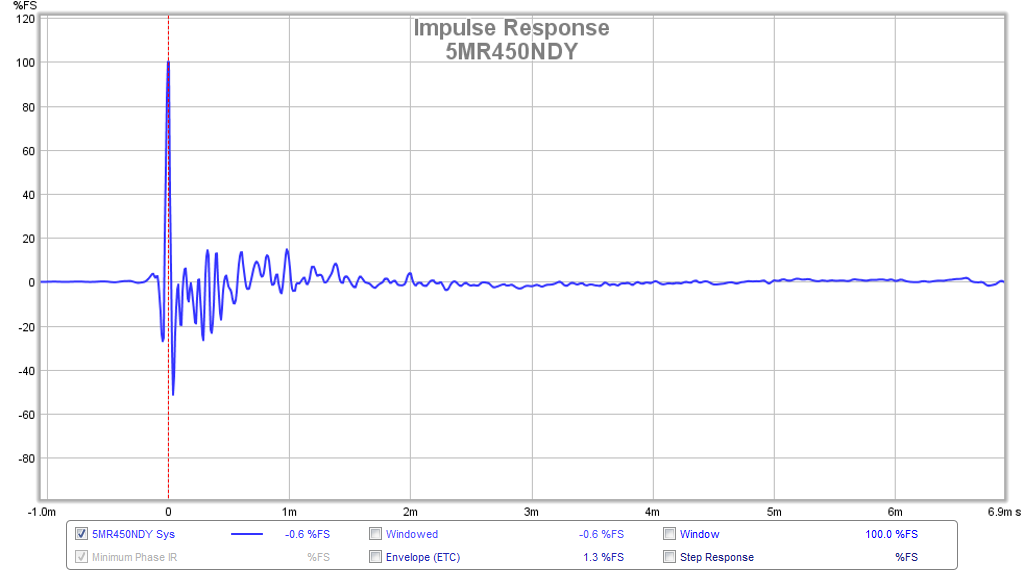
B - TC9FD:
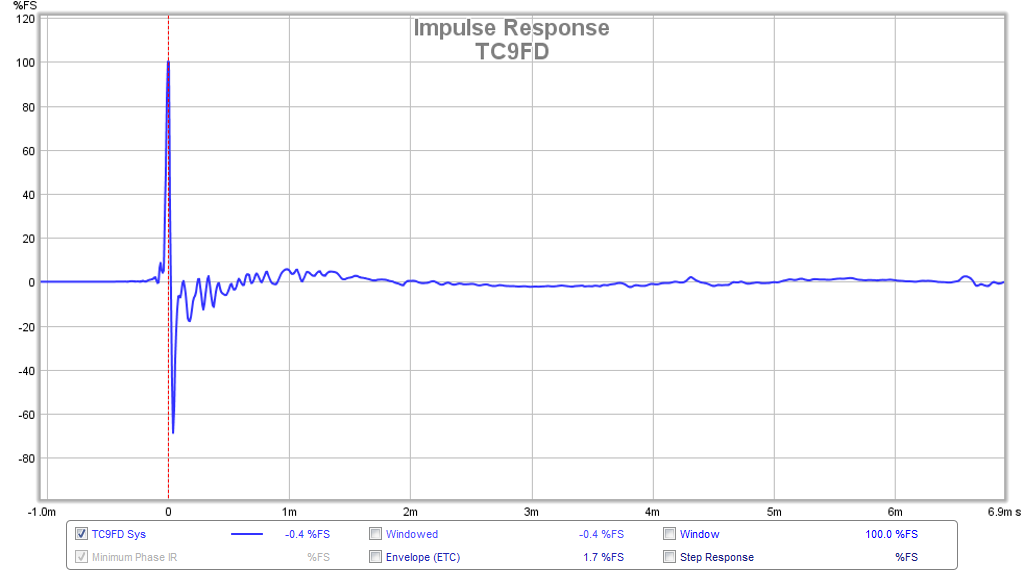
C- PS95-8:
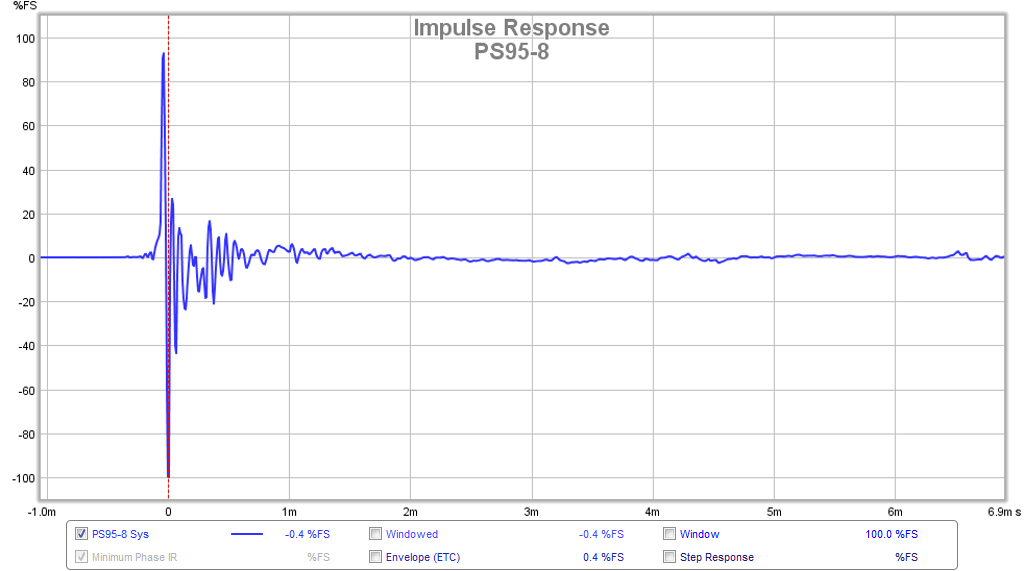
D - 3FE22r16:

E - RS100P-4:
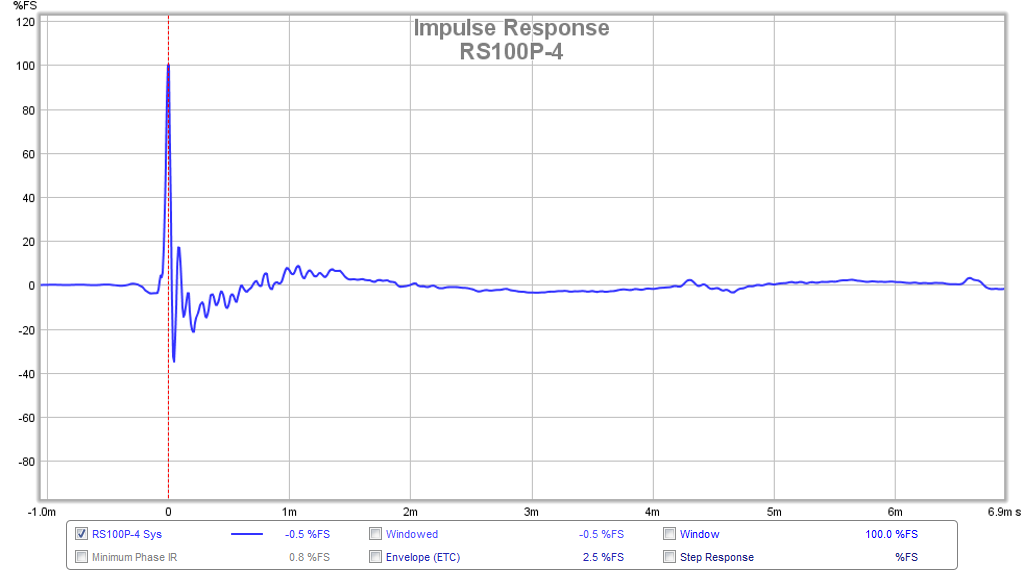
F - MA CHN-70:
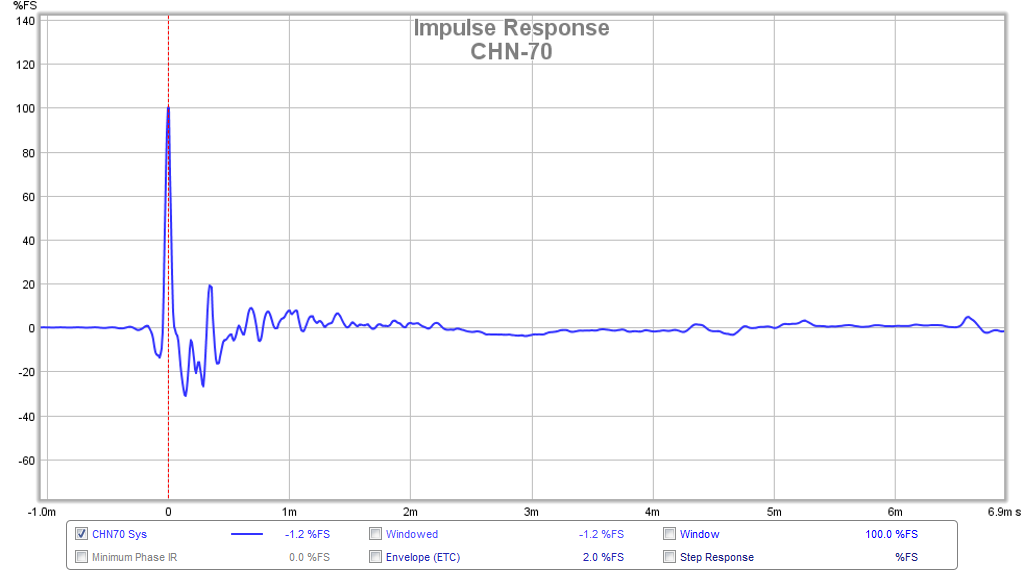
G - RS100-4:
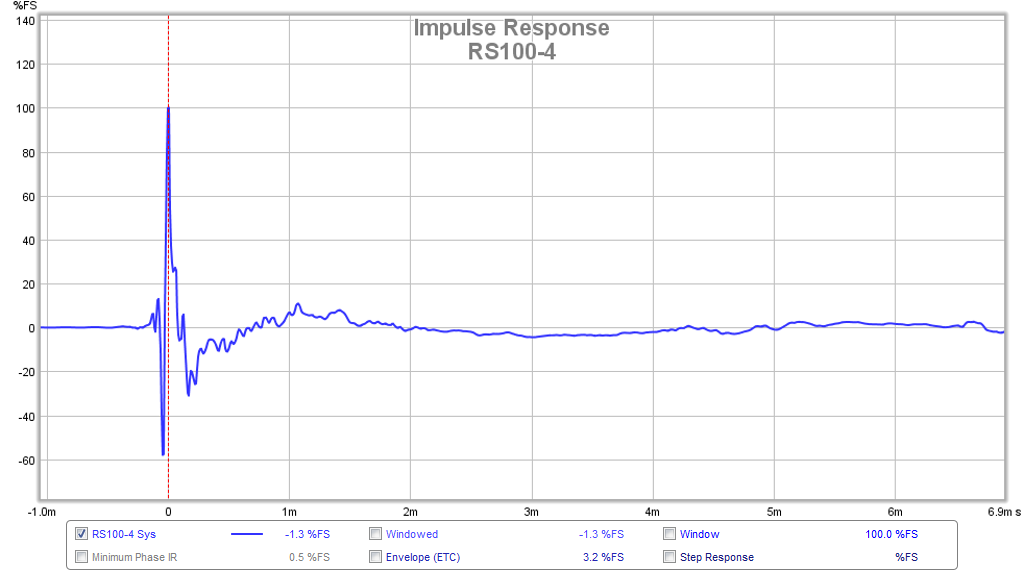
Impulse response from measurement at about 10 deg off axis and 0.5m distance:
A - 5MR450NDY:

B - TC9FD:

C- PS95-8:

D - 3FE22r16:

E - RS100P-4:

F - MA CHN-70:

G - RS100-4:

Attachments
Harmonic Distortion of All Drivers
I admit this is not all that useful from an absolute harmonic distortion standpoint as the drive levels are low. It is good for relative comparison though. Drive level is about 0.7 volts rms and mic is at 0.5m. For the very sensitivie 5MR450NDY, the drive level was attenuated below 0.7 volts in order to level match the rest of the drivers which were all around 84 to 86dB.

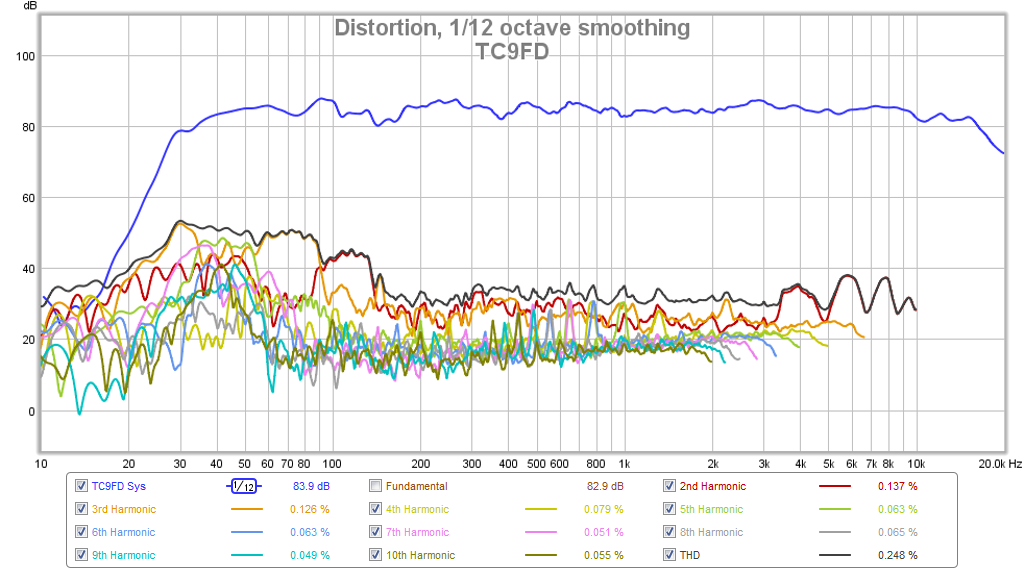


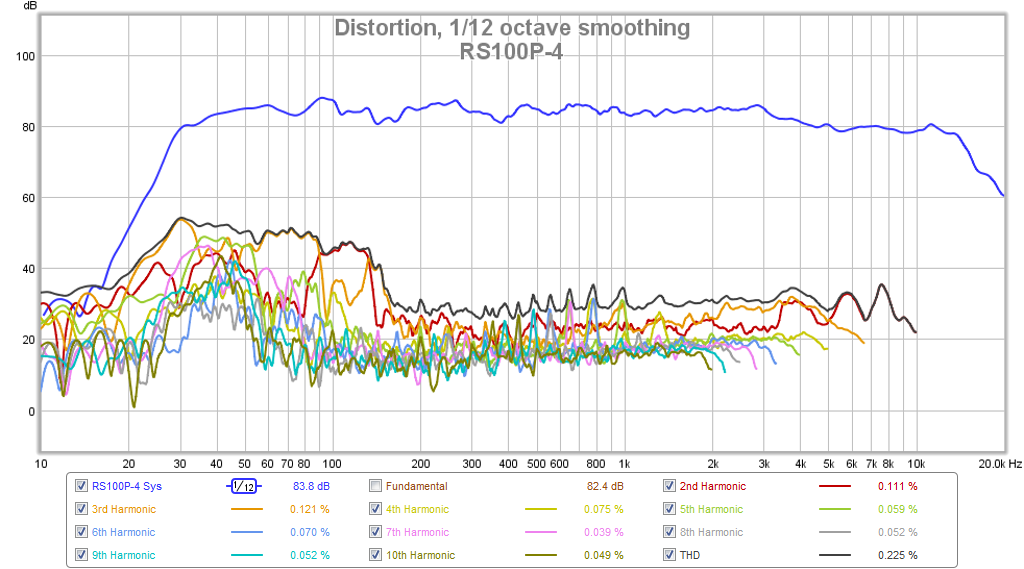
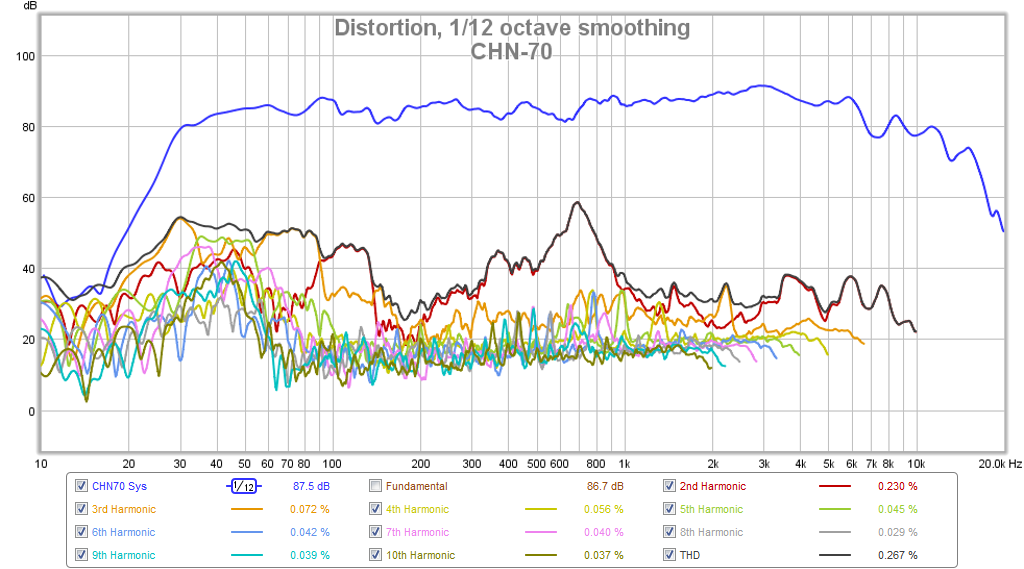
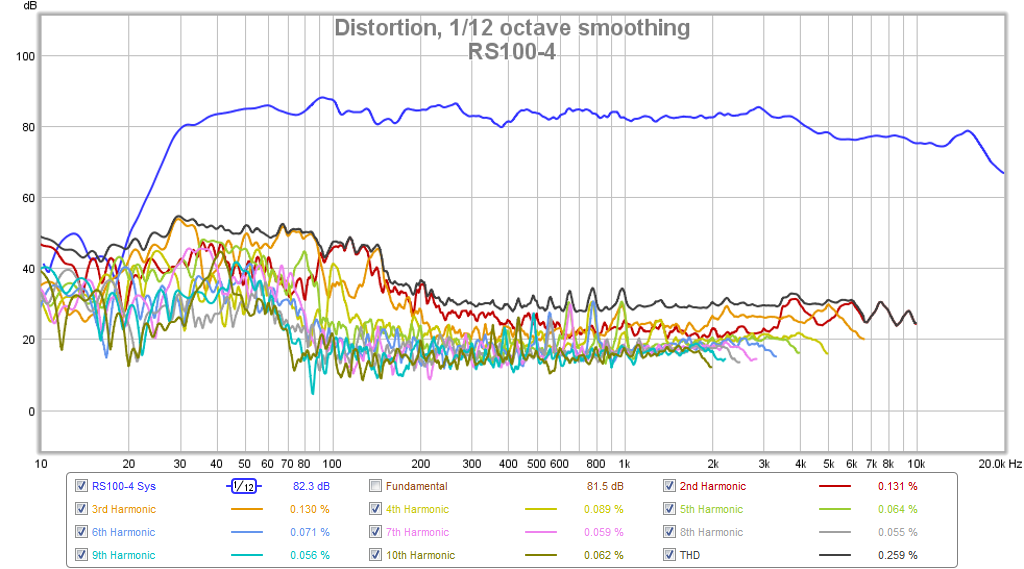
I admit this is not all that useful from an absolute harmonic distortion standpoint as the drive levels are low. It is good for relative comparison though. Drive level is about 0.7 volts rms and mic is at 0.5m. For the very sensitivie 5MR450NDY, the drive level was attenuated below 0.7 volts in order to level match the rest of the drivers which were all around 84 to 86dB.







Attachments
Last edited:
I tried to use the Norah Jones track, but that was probably the worse one to pick due to the constant HF shimmer that sounded like noise. i had to go back and listen to the original recording and decided the worse speaker would tone it down some. so by the OP rules of the game, the A test was flawed to make it "more pleasing" to these ears. I'm a fan and very familiar with Norahs voice and any other song would of been my go to reference.
so i spent most of the time listening to the jazz track. I easily ruled out 2 or 3 recordings and in the end no clear favorite emerged. so i threw up my hands and ran a spectrum analysis of track 3. i still couldn't decide from the data there!
data from track 3 in order A-G left to right.
data from track 3 in order A-G left to right.
Attachments
OK I will put in my subjective impressions originally PM'ed to X before I got the key. I am definitely one of the minority in the preference (I voted for F as overall favourite)! comments below in reverse order of being submitted.
After X uploaded the original tracks the colouration of the F driver was very apparent. Interestingly before this comparison though I thought that some of the other drivers sounded less natural.
After reviewing the curves posted, I would say that driver F whilst showing major deviance below and above, is arguably the flattest driver between around 800Hz and 5.5Khz. This perhaps to me was more important than the missing bass, and the missing high frequencies. Whilst it doesn't appear to be good for a full range, I think arguably it could be used quite successfully as a midrange 🙂
The thing that perhaps surprised me the most was how much I disliked E and G. Looking at the datasheets for those drivers I would not have expected that.
I do have my reservations about the one size fits all aspect of this test, and wonder just how much of a difference there would be if the enclosure was designed specifically for each driver to maximise the individual strengths (and minimise their shortcomings), but all in all a fun test and thanks to X for all the hard work to set it up!
Tony.
Now my own system at home is pretty much flat between 200Hz and 15Khz (+- about 1.5db) So I am used to a flat sounding system. I was not familiar with the tracks presented (and was listening on headphones that I have only just aquired and have actually not used for any music in the past (they were purchased for use on planes, noise canceling). Without any reference as to how things SHOULD sound, I chose F. I did have a suspicion it was lacking bass from the ACDC track, as it sounded the most different to all other drivers on the guitar.Originally Posted by wintermute
I had a thought this morning. I didn't mention in my subjective impressions, but I think that my preference for F was probably swayed by what to me seemed like better transient response. G and E I think had the worst transient response. F just sounds a lot clearer to me. Thanks xrkI just read one of the other posters listening impressions. Almost the opposite of mine! That is very interesting! He thought f was the worst and e and g would be best for living room. I thought that they were the worst! I'm not sure what to make of that I will be very interested to see the sweeps of all of them if you post them when the test is finished
I will be very interested to see the sweeps of all of them if you post them when the test is finished

Cheers, Tony.
Quote:
Originally Posted by xrk971
Quote:
Originally Posted by wintermute
Hi xrk, thought I'd send through my subjective results via pm rather than in the thread so as not to potentially affect others votes.
E and G I did not like at all. D was borderline, A, B and C were not too bad, but A has a bit too much top end for my liking.
The guitar on the ACDC was the thing that really surprised me. A big difference between the different speakers. I assume that the top drivers were level matched? Some of them seemed to have a lot more bass than others.. Did you match on a single tone or using pink noise?
These were the notes that I took. I decided to vote for F overall.
Track 1.
On second Listen A is not too bad (at first listen was not impressed).
definitely not E.
F not bad
B and C not bad.
D a bit echoy
Not G. too much echo not balanced mushy.
Track 2
B better than A. and better than C
D on acadaca is not bad.
E too bass heavy.
F good
Not G
On track 3 F clear favourite. Interestingly track A sounds good, but too much emphasis on treble This was the hardest track to listen to. none of them sounding great.
G once again very muffled sounding.
After X uploaded the original tracks the colouration of the F driver was very apparent. Interestingly before this comparison though I thought that some of the other drivers sounded less natural.
After reviewing the curves posted, I would say that driver F whilst showing major deviance below and above, is arguably the flattest driver between around 800Hz and 5.5Khz. This perhaps to me was more important than the missing bass, and the missing high frequencies. Whilst it doesn't appear to be good for a full range, I think arguably it could be used quite successfully as a midrange 🙂
The thing that perhaps surprised me the most was how much I disliked E and G. Looking at the datasheets for those drivers I would not have expected that.
I do have my reservations about the one size fits all aspect of this test, and wonder just how much of a difference there would be if the enclosure was designed specifically for each driver to maximise the individual strengths (and minimise their shortcomings), but all in all a fun test and thanks to X for all the hard work to set it up!
Tony.
I just wanted to add, that I spent probably 15 years listening to my cobbled together 3 ways which had some fairly major issues. These speakers had philips dome mids which were very good between 800Hz and about 4Khz, but they were crossed over way too low (about 500Hz) resulting in a gap below 800Hz. Quite possibly I have been desensitized to problems in this region.
Tony.
Tony.
In the context of this test I am not sure if that is worth discussing. I can't remember if the mic distance was mentioned, but here it seems like it could be pretty closely mic'd? That way we'd lose a fair amount of the room sound and the power response is what determines how any reflected sound may be presented. Certainly here the axial response is going to be the most, by several orders of magnitude, important in our perception of the recorded sound.
Personally I think E, the Dayton RS100P has the flattest frequency response. Yes it has a downward trend from 1kHz and up, but ignoring that the +- deviation, if one were to draw a best fit line through the flat response, would be very low indeed. Incidentally people tend to prefer a downward tilted response as these tend to be the most pleasing in the long term. This is how my system is balanced so it's no surprising that I preferred E because it's what I am used to and know it's what I can listen to for hours on end without listening fatigue.
Driver G was my second favourite and I had a hard time choosing between it and driver E. I felt that G sounded pretty much identical to E (go figure) except that it has a bit more top end sparkle. I almost went for G but felt that it could perhaps become fatiguing in the long term so opted for E.
The other drivers were all slightly too edgy for my liking, something a bit of simple EQ could no doubt fix, or plain horrible, like driver F, the MA driver. This I wouldn't even want to bother EQing. Sure in multiway systems drivers can sound horrendous without a filter in place, but that's not the idea here and in that respect the MA driver fails in terms of a useful product. Its raised output between 800Hz and 6kHz, coupled with the potential absence of any baffle step compensation and you've got a recipe for auditory distress.
For what it's worth I ran this test on my HD650s driven by TPA6120s and fed by an ES9018 DAC.
As this is discussing drivers to be used in a FAST implementation, it would perhaps be interesting to see the test repeated but with smaller drivers? The trouble with the larger crowd is that the have their breakup within the top octaves and they suffer from either roughness up top, or from a curtailed top end. Off the top of my head Dayton audio has the RS75, TB has a plethora of useful 2-3" drivers, SB Acoustics has the SB65WBAC and then there are obviously more out there. The smaller the driver the more likely it is to perform well up to the top octaves and the better the off axis response will be also. For FAST implementations it would no doubt be better to go for one of these and although I don't like the idea of 'filterless' drivers, even when using full range drivers, I respect the fact that lots of people do want to do this, so a 2-3" lot might be worth considering.
Also it would be nice to see this test repeated but this time with all of the drivers EQ'd flat, but with perhaps minimal EQ, that anyone could implement, even passively. Using a DSP is the holy grail of course, but most people don't like using them for whatever reason (I love them).
For all of its flaws and nay sayers I want to thank XRK for running this test as it was definitely fun to participate in. It made for a refreshing change from the usual banter back and forth between subjectivists and the odd objectivist, for now we actually had something concrete to worth with. And you know what? The results were actually something most of us could agree with/on and logically explain! CURSE YOU SCIENCE. Curse you data poll for objectively gathering peoples subjective opinions and presenting it in a way that we'd generally expect to find - that people generally preferred the flat systems but tended towards the ones that had the most sparkle, there's nothing odd about that at all.
This post deserves a bump. Couldn't agree more with everything you've said, 5th. I had remarkably similar reactions to B, E and G. I went for G for because I thought it was very even overall, and it's muted HF could be easily fixed.
I agree that we could hear the room too much. I would choose a deader room next time. But still, we got some useful results. A big thanks to X for running this test! Lots of great work.
Well done X & everyone 🙂
It might sound strange for any audiophile or diyer, but I've never done any audition (listening test) for audio equipment and parts I bought over the decades of audio life. I always choose by published specs, trusted recommendations, and my own instincts. Luckily, I've never bought something that's too bad to be used.
This test is new to me that it's possible to evaluate speakers by such method. And the results are pretty objective as I've seen.
Maybe, I repeat maybe, the end result of such test and the choice from "published specs, trusted recommendations, and my own instincts" would be pretty much the same, but it's surely much more reassuring to have such an audition prior to the purchase.
For this, I thank you again, X. You won't have too many of it. 🙂
It might sound strange for any audiophile or diyer, but I've never done any audition (listening test) for audio equipment and parts I bought over the decades of audio life. I always choose by published specs, trusted recommendations, and my own instincts. Luckily, I've never bought something that's too bad to be used.
This test is new to me that it's possible to evaluate speakers by such method. And the results are pretty objective as I've seen.
Maybe, I repeat maybe, the end result of such test and the choice from "published specs, trusted recommendations, and my own instincts" would be pretty much the same, but it's surely much more reassuring to have such an audition prior to the purchase.
For this, I thank you again, X. You won't have too many of it. 🙂
- Status
- Not open for further replies.
- Home
- Loudspeakers
- Full Range
- A Subjective Blind Comparison of 3in to 5in Full Range Drivers
